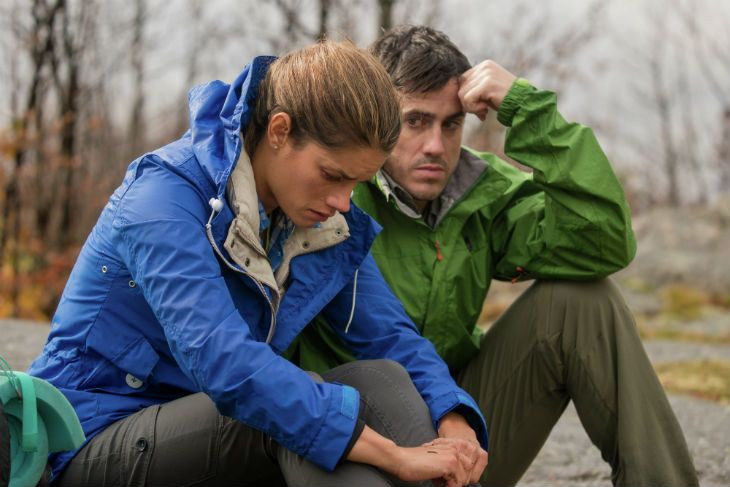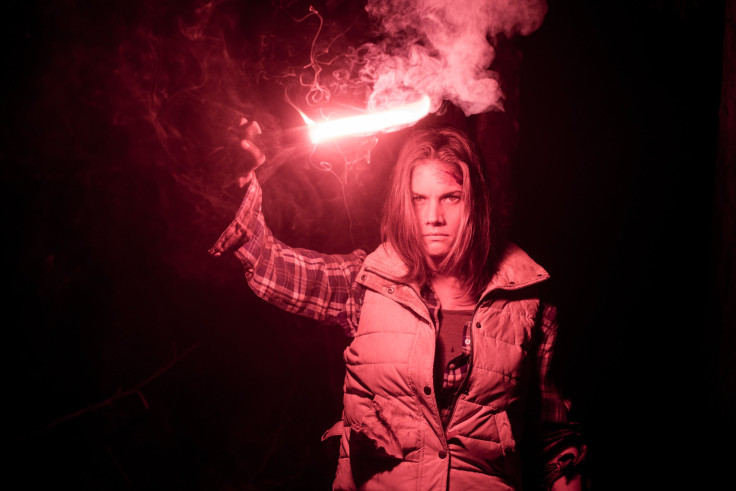Black bears are cowards. Could a grizzly or polar bear consume your face until your final, shrill scream is cut short? Sure. Herzog made a documentary about it. But a black bear? There’s no way those cuddly, half-pint omnivores could be menacing. Having a black bear as your horror movie monster would be like swapping the great white in Jaws for a nurse shark. That Backcountry can erase all the honey-eating wimpiness of the black bear, in the process creating a harrowing death-bringer bear, proves that Backcountry has finally nailed the bear horror movie after decades of sporadic attempts.
Backcountry Movie Trailer
Backcountry, from first time director Adam MacDonald, is one of the better entries in a recent crop of more realistic genre films enabled by digital cameras and plummeting production costs. Spanning both horror and science fiction, the predominant ethos of this sensible fantastic is handheld (not shaky-cam or found footage), digital photography combined with naturalistic dialogue and plot stakes confined to the characters. At its best -- Upstream Colors, Kill List – big ideas are explored while intimate characters are developed. But the look can also become a haven for dulled high concepts and an excuse to forego stylistic considerations under the cover of realism, creating a business make-believe that’s only shaped like a movie. Backcountry avoids those pitfalls by keeping the focus tight on believable character, setting up its conflicts early (even the first shot promises death), and then delivering.
Nature's fury is coming for you next week. #BACKCOUNTRY in theaters and on demand March 20. pic.twitter.com/8J0IqV7E5m
- IFCMidnight (@IFCMidnight) March 11, 2015Though Backcountry has the familiar slow-burn of movies like House of the Devil, an early campfire sequence proves that there’s more to Backcountry than just waiting on the monster to arrive. A dinner encounter with a cocky trail guide (Eric Balfour) who openly emasculates Alex (Jeff Roop) colors the rest of Backcountry, asking the viewers to consider the murky forces that can nudge us toward danger and the mystery, not to mention potential menace, that every other human life represents when held up against our own experience. It’s a simple scene that turns Backcountry away from simplicity.
Backcountry’s focus on character proves rewarding when the bear jaws start gnashing, even if the occasionally aimless dialogue drags the set-up in parts. It all adds up in the end; Backcountry lingers with you. But the tightly wound campfire scene and a hill-top explosion from Jenn makes couple banter performed purely for tone -- dialogue as texture – feel a little like missed opportunities.

Aesthetically, Backcountry carefully considers how it uses sun and darkness and transcends the predominant handheld style with some breathtaking shots of forest landscapes. If Backcountry gets a bit shaky-cam in covering up incredibly believable bear assaults then so what? Less easy to brush off is the over-use of a subjective lack of focus as Jenn searches woozily for respite from her injuries.
The overall impression left by Backcountry is of a simple goal amply exceeded. The narrative is sparse and uncomplicated, but never feels skeletal. The terms of engagement are set early: Backcountry is about a troubled couple in the woods who meet a bear. In this, Backcountry offers up more than it promises, with plenty of gruesome trauma thrown in.
This makes Backcountry the greatest bear attack movie since Prophecy and maybe the only take on this peculiar horror subgenre to ever succeed with a straight face. It will be exciting to see what Adam MacDonald comes up with next.
Backcountry is out in theaters and available via VOD on March 20.














![[EG April 19] Best 'Stardew Valley' Mods That Will Change](https://d.player.one/en/full/226012/eg-april-19-best-stardew-valley-mods-that-will-change.png?w=380&h=275&f=955520b8313253ee3c39c791f6210f38)



